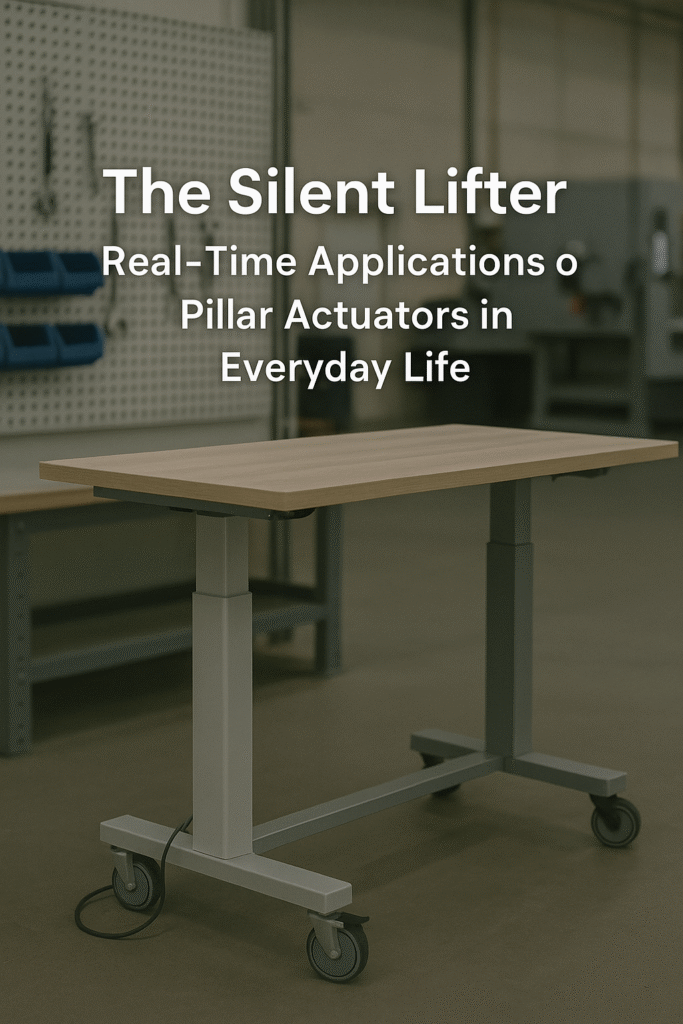It was just another busy Monday morning when I visited a friend’s hospital for a regular check-up. As I waited outside the consultation room, I noticed something interesting—a patient bed that was smoothly rising and adjusting at the touch of a button. No hydraulics, no noise, no jerks—just a graceful, silent lift, Pillar Actuators.

“Pillar actuator,” said my engineer mind, almost whispering like an old friend reminding me of its presence.
That moment took me down memory lane—to the time we implemented pillar actuators in our first project at a high-end hospital. The client wanted a motorized operating table with smooth height adjustments and patient positioning. Traditional hydraulic systems were messy, prone to leaks, and difficult to maintain. That’s when we proposed electric pillar actuators—precise, clean, and quiet.
Hospital Applications: Precision That Saves Lives
In hospitals, precision is not a luxury; it’s a necessity. Whether it’s the adjustable ICU beds, surgical tables, or diagnostic equipment like imaging machines, pillar actuators silently power the movements. Their ability to handle heavy loads, maintain stability, and offer programmable motion made them ideal for patient safety and doctor convenience.
I remember a neurosurgeon once said, “This actuator helped me adjust the patient’s head with millimeter accuracy during surgery. It’s like having an invisible assistant.”
Manufacturing Plants: Strength in Silence
Another flashback hit me—our work with an automobile manufacturing unit. The plant needed a solution to adjust the height of assembly workstations. Workers of different heights were facing ergonomic issues. We deployed a custom pillar actuator system that allowed stations to raise or lower with a simple push-button.
Not only did it increase productivity, but it also reduced fatigue and injury. The plant supervisor called a week later and said, “You may have solved a small problem, but it made a big difference.”
That’s when I realized: real-time applications are not always flashy—they’re impactful.
Office Automation: The Rise of Smart Desks
Fast forward to a recent corporate office renovation project. The client wanted a modern workspace with motorized sit-stand desks. Pillar actuators fit perfectly here. Smooth lifting, programmable memory settings, silent operation—these desks were no longer just furniture; they were wellness tools.
We integrated the actuators with IoT control—employees could adjust desk heights using a mobile app. Productivity went up, and so did employee satisfaction. That’s the power of automation with a human touch.
Retail and Home Spaces: Smart Living is Here
One of the most unexpected use cases we encountered was in a luxury villa where the homeowner wanted a retractable TV lift from the floor. Our team engineered a sleek pillar actuator system that lifted the TV out of a wooden cabinet at the foot of the bed.
When guests saw it in action, they were amazed. To them, it was magic. To us, it was just good design powered by a great actuator.
Conclusion: More Than Just a Component
Pillar actuators might look like simple lifting columns, but they are the backbone of smart automation in real-time environments—hospitals, factories, offices, homes, and more. They bring together functionality, aesthetics, and precision in ways that often go unnoticed but are always appreciated.
So, the next time you see something rising smoothly—be it a hospital bed, a factory platform, or even a TV in a luxury suite—remember, there’s a silent hero behind it. A pillar actuator, doing its job without making noise, without asking for credit. Just like the best parts of life.
